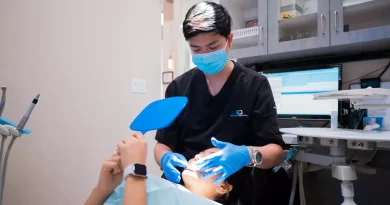What Are Some Alternatives To Root Canals For Treating Dental Issues?
In modern dentistry, root canals have long been a standard treatment for severe dental issues, aiming to save a compromised tooth from extraction. However, advancements in dental research and technology have introduced alternative approaches that offer promising results with fewer drawbacks. This article delves into a detailed examination of viable alternatives to root canals, backed by scientific evidence and clinical experiences. We will also explore the significance of tooth charting with numbers, which aids in understanding dental conditions and facilitates better communication between patients and dental professionals.
Dental Filling Therapies
Dental filling therapies have gained popularity as a minimally invasive alternative to root canals. When dental decay or cavities are detected at an early stage, a dental filling can be placed to restore the tooth’s structure and function. Different filling materials, such as composite resins and ceramics, are available, offering aesthetically pleasing and durable results.
Pulp Capping
Pulp capping is a procedure that focuses on preserving dental pulp vitality when the nerve of the tooth is exposed due to deep decay or injury. This technique involves applying a medicated agent directly to the exposed pulp to promote healing and protect the underlying tissue. While pulp capping has shown promising results in select cases, its success largely depends on early detection and appropriate patient selection.
Regenerative Endodontics
Regenerative endodontics is an emerging field that aims to revitalize damaged dental pulp and tissues. This technique involves the use of bioactive materials, growth factors, and stem cells to stimulate the growth of new dentin, pulp, and blood vessels within the affected tooth. Regenerative endodontics presents a revolutionary approach to treat dental issues while preserving natural tooth function.
Apicoectomy
In situations where a root canal has failed or the infection persists, an apicoectomy may be considered as a viable alternative. This surgical procedure involves the removal of the infected tissue from the tip of the tooth root, followed by sealing the root canal from the root end. Apicoectomy can be a successful solution when conventional root canal treatment is insufficient.
Dental Implants
For severely damaged or infected teeth that cannot be saved through conventional means, dental implants offer a reliable option. Implants involve the surgical placement of an artificial tooth root made of titanium or other biocompatible materials, followed by the attachment of a lifelike prosthetic crown. Dental implants provide a durable, long-term solution for tooth restoration and functionality.
The Significance Of Tooth Charting With Numbers
Tooth chart with numbers, also known as the Universal Numbering System, plays a pivotal role in dentistry by providing a standardized way to identify and communicate specific teeth. This method uses a two-digit system to assign a unique number to each tooth, aiding in patient records, treatment planning, and referrals. Dental professionals can quickly refer to specific teeth using this chart, facilitating efficient communication between colleagues and specialists.
Conclusion
As dental research continues to evolve, so does the array of alternatives to root canals for treating dental issues. From minimally invasive therapies like dental fillings and pulp capping to advanced regenerative approaches and dental implants, patients now have more options for preserving their natural teeth. Additionally, tooth charting with numbers enhances dental care by enabling accurate identification and seamless communication among dental professionals. As always, consulting with a qualified dentist is crucial to determine the most suitable treatment option based on individual dental conditions and needs.



